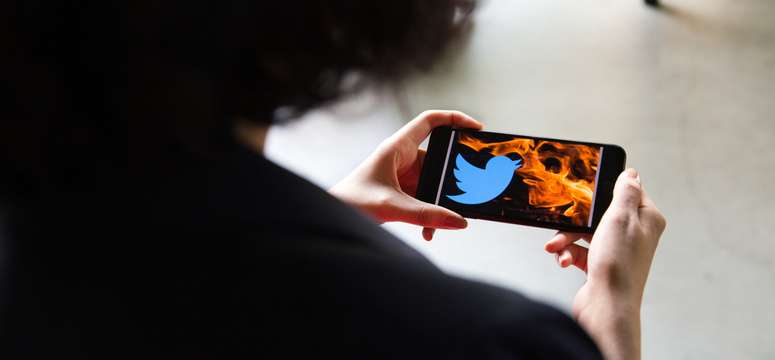Research uses social media to learn what people really need in time of crisis

Painstaking analysis of nearly 70,000 tweets sent out by evacuees escaping the Fort McMurray wildfire shows key concerns in a crisis aren't being answered by current smartphone emergency apps, leaving citizens in the dark at a time of mass panic.
After studying queries and concerns repeatedly expressed over Twitter during last May's evacuation of 88,000 people from the fire-threatened city, software engineers at the University of Calgary determined the most pressing needs and questions failed to match up with features being provided via smartphone software, a serious concern when the Internet is a primary source of information.
"Our results show that the apps presently available to people in need are lacking relevant and useful features," explains Maleknaz Nayebi, lead researcher and PhD candidate at Schulich School of Engineering.
"We found that up to 80 per cent of the features people are looking for aren't accommodated right now. There are 26 apps for wildfires in North America and Australia, for example, but they don't have the features people really want."
Learning what people really need in a crisis
The study, published online through the 2017 IEEE/ACM 39th International Conference on Software Engineering, aims to arm future software developers with a better sense of what people really need in a crisis, whether natural disaster like a fire or flood, or man-made, like an act of terror.
Ensuring victims can get the right information via their smartphones, at times when first responders are overwhelmed and people are panicked and desperate is increasingly vital—and as this research noted, "Social media became the crisis' unofficial emergency broadcast system."
To determine what people really wanted during the Fort McMurray wildfire, the team designed a program called MAPFEAT to comb through 69,680 unique tweets from May 2 to May 7, 2016, and then match the most commonly repeated queries with existing mobile application software.
MAPFEAT—the acronym stands for Mining APp FEAtures from Tweets—told researchers that information and service most in demand at the height of the Fort McMurray fire wasn't available, even via apps specifically designed to provide information during wildfires and other disasters.
Top 10 most helpful features
The top 10 features that would have helped evacuees the most, based on MAPFEAT's crowdsource analysis and followup studies with the general public, included:
- Fire alarm notification
- Food and water requests and resource
- Emergency maintenance service
- Send emergency text messages
- Safety guidelines
- Fire and safeness warning
- Request ambulance at a tap
- Find nearest gas station
- Emergency zones maps
- Find a medical centre
Whether it was questions about the availability of petrol, proximity of danger or inquiries about potential food and shelter, Nayebi and her team found only six of the top 40 concerns were addressed by existing apps, and not a single item in the top 10 was covered.
"By using MAPFEAT, we proactively understand victims' needs and suggest mobile software support to the people impacted," says Nayebi.
Looking for applications beyond emergencies
Rather than just a critique of software shortcomings, the researchers hope their analysis will be a silver lining to the gargantuan cloud of fire and smoke that sent thousands of residents fleeing for their lives, and the same crowdsource technique may be applicable for software design beyond emergencies.
"We are at the first stage of extracting those needs, and the next step is for organizations to adopt this information," explains Nayebi.
Given a chance to employ MAPFEAT and understand what people really want to know in a mass emergency, it's hoped public information apps can be updated to reflect the reality of a panicked population, and provide useful information in a crisis or disaster.
"That is a fundamental problem in all software development, to try and understand the user needs is always difficult," says Guenther Ruhe, Nayebyi's supervisor and a member of the research team, along with Mahshid Marbouti, Rachel Quapp and Frank Maurer from UCalgary's Faculty of Science.
"That's why this is such a smart idea, because from social media you get basically all the information you need to solve this problem."
Provided by University of Calgary





















